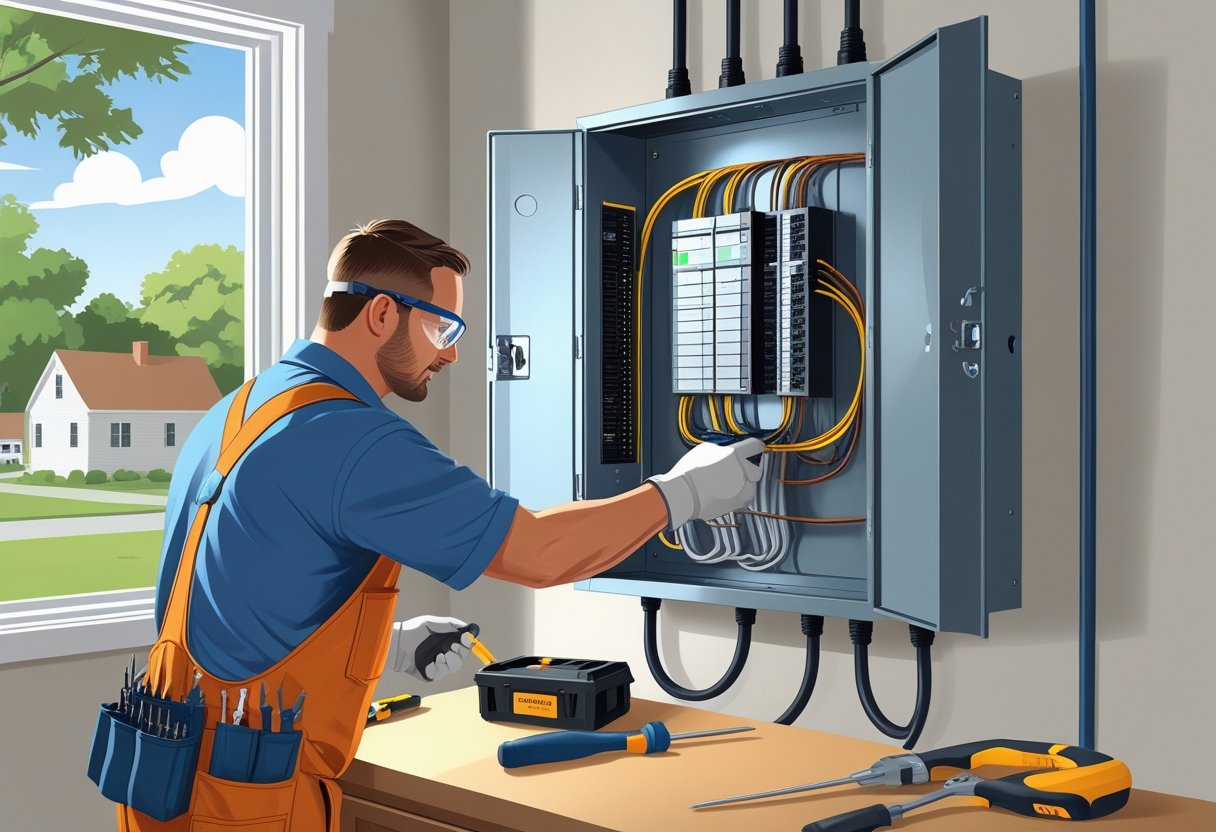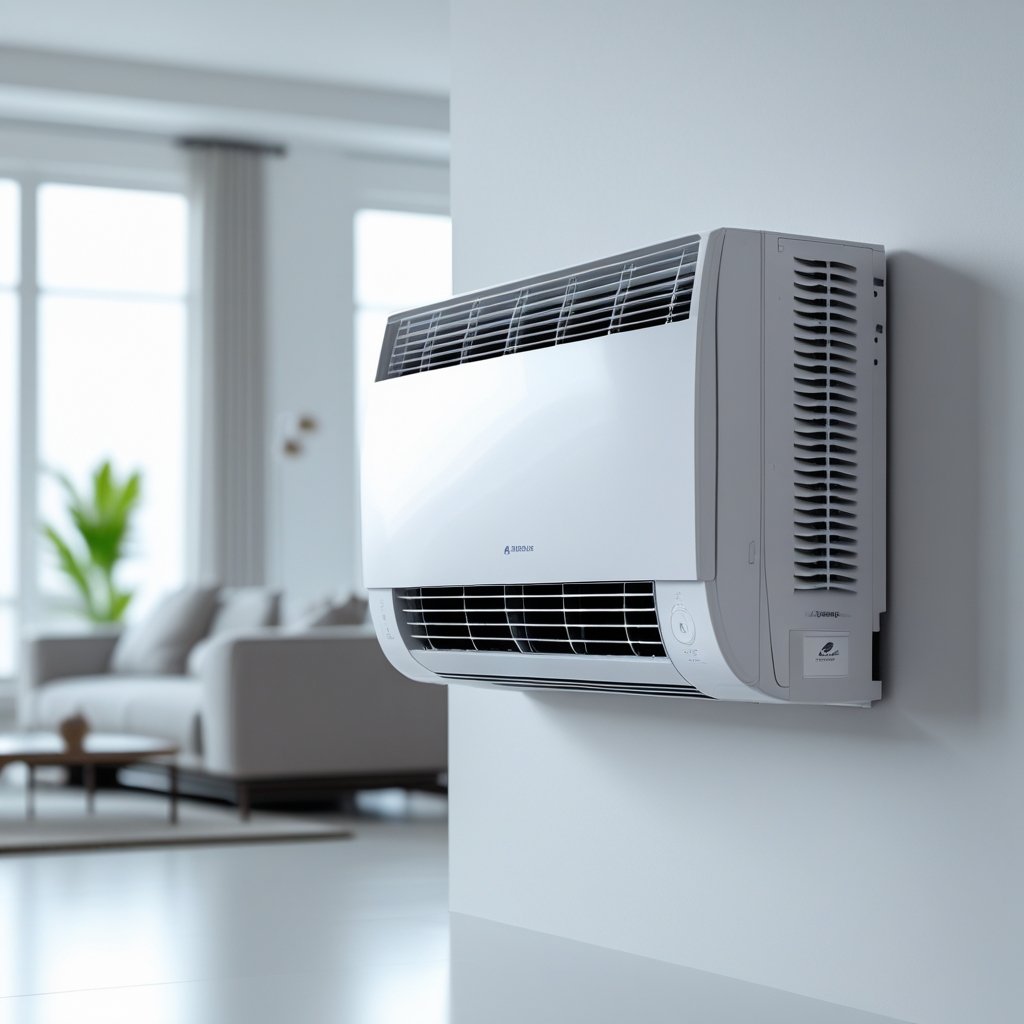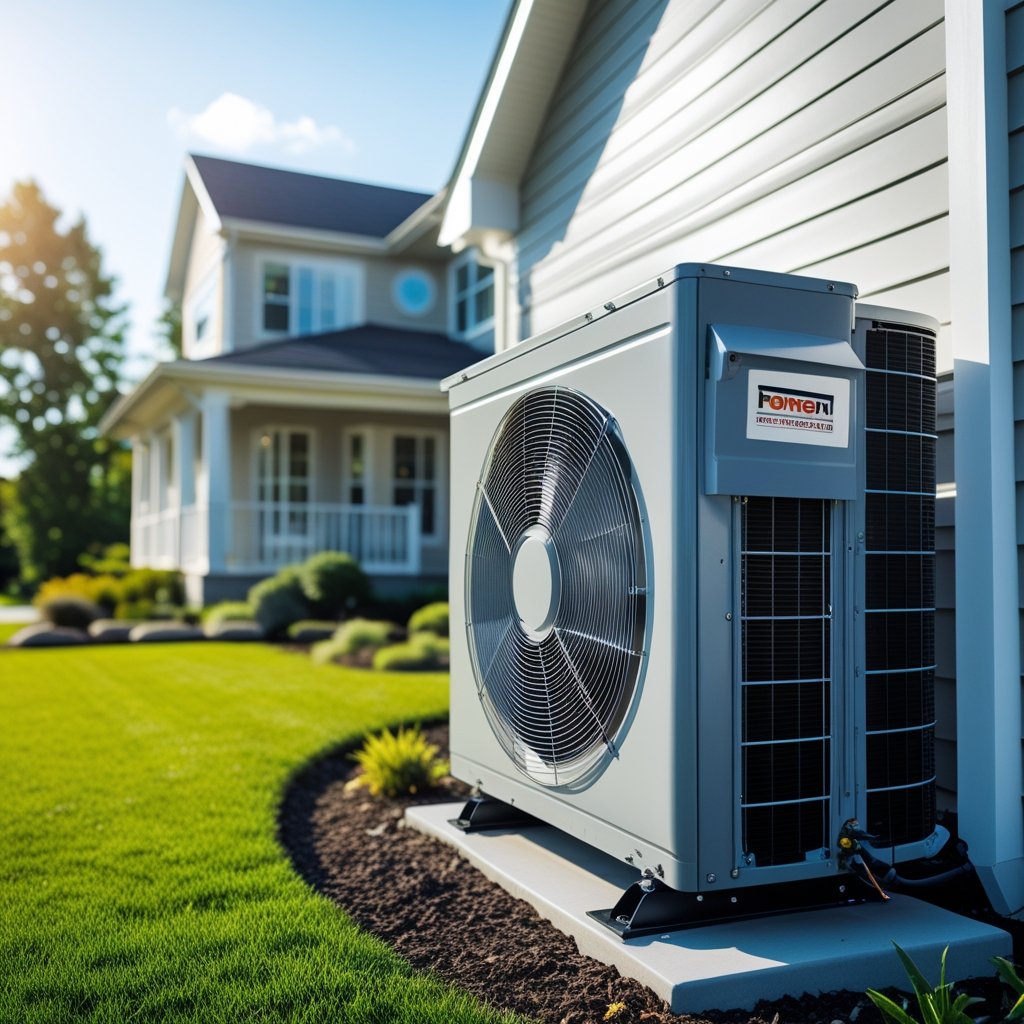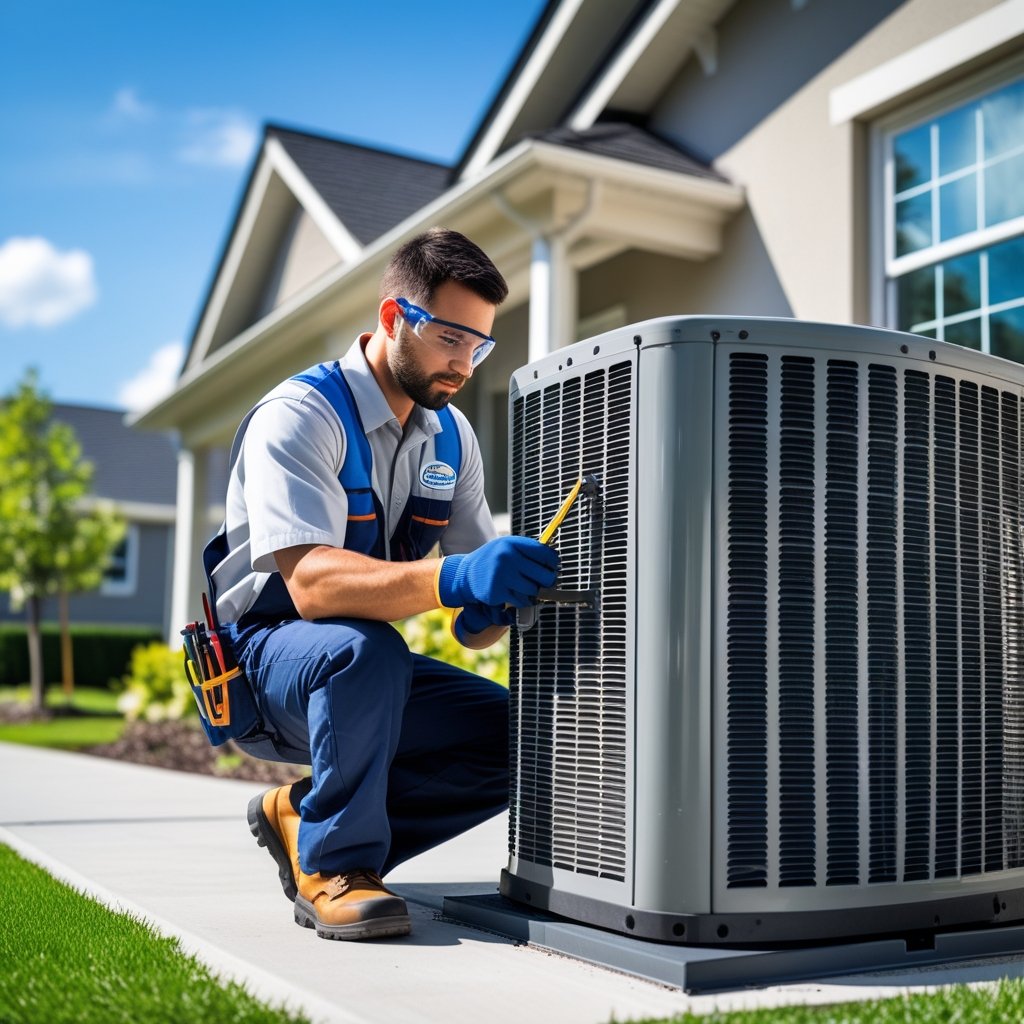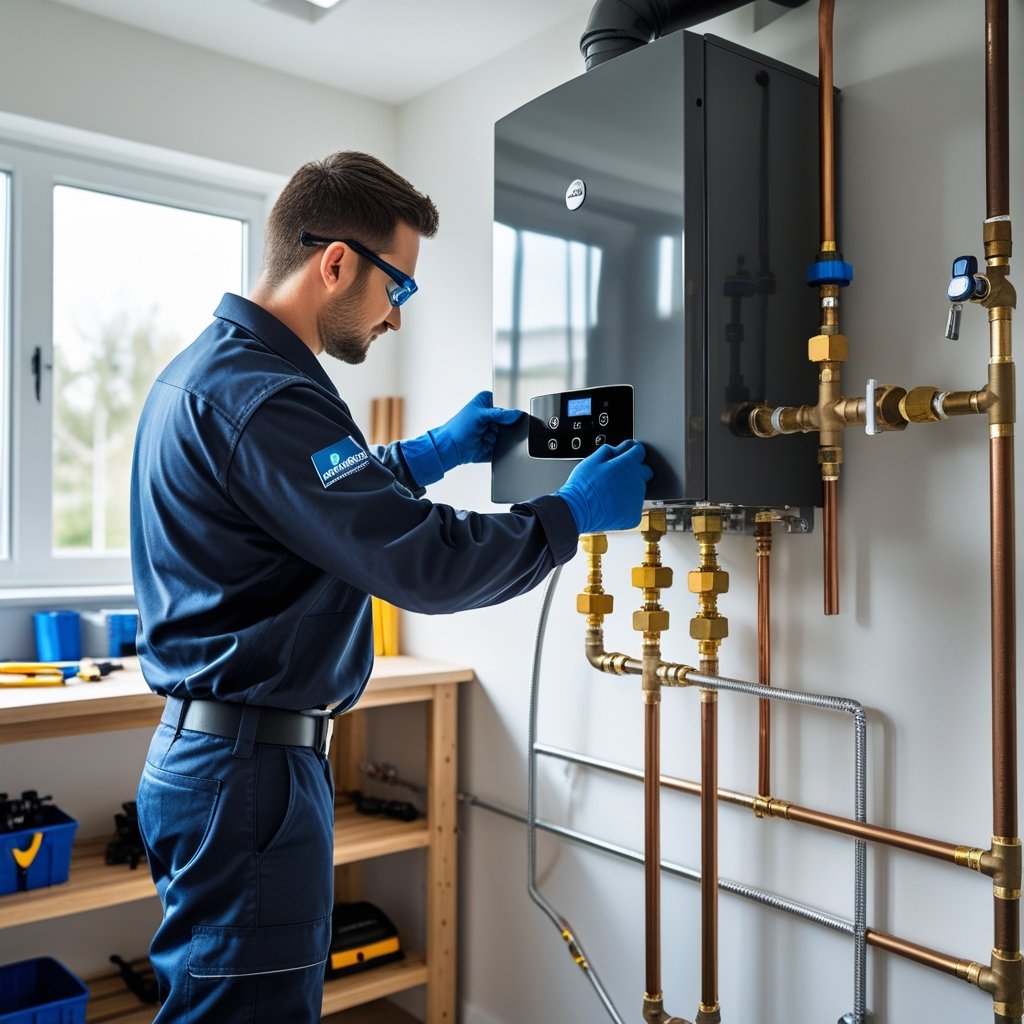Central air conditioning, or central AC, cools your whole home or building through a web of ducts. It relies on a single outdoor unit that pumps cool air inside and circulates it, so you get comfort in every room—no need for all those window units or fans. In South Central Pennsylvania, you’ll spot these systems in lots of homes, since they help keep things steady when summer’s at its worst.
When you go with central AC, you get a dependable way to stay cool and boost your indoor air quality. But here’s the thing: regular maintenance really matters if you want the system to run efficiently and avoid those wallet-draining repairs. At Leo Kob Co., we’ve been around the block with central AC—installation, tune-ups, you name it. Our customers count on us to help their systems last longer and use less energy.
What Is Central AC?
Central AC is built to cool your entire home with just one setup. It pushes cool air through ducts, so every room gets the same treatment.
Curious what central air conditioning actually means? Or how it’s not like those other cooling options? Let’s break it down.
Definition of Central Air Conditioning
Central air conditioning cools your whole house by sending chilled air through ducts. The main unit—usually sitting outside—pulls heat from inside and sends cool air out through vents in every room.
You’ll find a compressor, condenser, evaporator coil, and a thermostat that lets you set your perfect temp. The air gets cooled before it spreads out, which helps keep things steady everywhere.
This system’s a favorite in homes where folks want every room to feel the same. Plus, it keeps humidity in check, so things don’t feel sticky.
How Central AC Differs From Other Cooling Systems
Window or portable units only handle one room at a time. Central AC, though, uses ducts to cool the whole house. That means you don’t have to lug units around or worry about uneven temps.
Since the noisy stuff sits outside, central AC is usually quieter inside. And for whole-home use, it’s often more energy-efficient.
You could try mini-splits, which focus on specific areas without ducts, but if you want every room cooled at once, central AC is probably your best bet.
At Leo Kob Co., we’re all about helping folks in South Central Pennsylvania keep their central air running right, no matter the season.
How Central AC Works
Central air conditioning cools your home by moving hot air out and bringing cool air in. It relies on a few key parts working together to keep the temperature and humidity where you want them.
Main Components of a Central AC System
A central AC system’s got four main pieces:
- Compressor – Outside, it pumps refrigerant through the setup.
- Condenser Coil – Also outside, it lets heat escape from the refrigerant.
- Evaporator Coil – Inside, it soaks up heat from your indoor air.
- Air Handler and Ductwork – The air handler blows air over the cold coils, then pushes it through ducts into every room.
Refrigerant moves heat from inside to outside by changing from gas to liquid and back again. When you keep these parts in good shape, they’ll serve you well for years.
Basic Operation Process
When your thermostat senses it’s too warm, the compressor kicks on and sends refrigerant to the condenser coil outside. That’s where the heat from your house gets dumped outdoors.
The now-cooled refrigerant flows to the evaporator coil inside. Air from your house passes over this coil, cools down, and then the air handler pushes it through the ductwork into every room. This keeps cycling until you hit your set temperature.
Leo Kob Co. keeps these systems humming along, so you avoid big repairs and get better energy savings.
Types of Central AC Systems
Central AC comes in a few flavors, each with its own setup and perks. Some have separate indoor and outdoor parts, while others pack everything into one unit. And if you don’t have ducts, there are options for that, too.
Split Systems
Split systems are the most popular. They’re made up of two main parts: the outdoor unit (compressor and condenser) and the indoor unit (evaporator coil). Air gets cooled inside as it passes over cold coils, then ducts carry it everywhere.
Because the compressor sits outside, you don’t get much noise indoors. Split systems are typically energy-efficient and repairs aren’t too tricky. If your house already has ducts, this is usually the way to go. Leo Kob Co. handles maintenance and installs for these all over South Central PA.
Packaged Systems
Packaged systems cram all the cooling parts into one box, usually on your roof or by the foundation. This setup sends cold air right into your ducts—nothing bulky taking up space inside.
You save indoor space, and it’s handy for smaller homes or places with no basement. Some packaged systems even combine heating and cooling, so you’re set all year.
Ductless Mini-Split Central AC
Ductless mini-splits skip the ducts altogether. There’s an outdoor compressor and one or more indoor air handlers, usually mounted on walls or ceilings. Each one cools its own room or zone, so you get more control.
If you don’t have ducts or just want to cool certain spots, mini-splits are a smart choice. They also save energy since you don’t lose air through leaky ducts. Leo Kob Co. can help with mini-split installation and repairs, especially for custom setups in Lancaster, Harrisburg, and nearby.
Installation Considerations
Putting in central air isn’t just plug-and-play. You’ve got to look at your home’s layout, airflow, and whether you want to call a pro or try it yourself.
Ductwork Requirements
Central AC usually needs ducts to move cold air around. If you already have ducts, they should be checked for leaks or damage. Bad ducts waste energy and leave some rooms too warm.
No ducts? Adding them can be a big project—think cutting into walls or ceilings, which isn’t exactly tidy or cheap. Make sure your ducts match your AC’s size for the best results. Old or badly sized ducts can shorten your system’s life and drive up your bills.
Home Size and Layout
Your home’s size plays a big role in the kind of central AC you’ll need. Smaller homes do fine with compact systems; big spaces might need more power or separate zones. Layout matters, too—open spaces let air move better, but lots of walls or floors can block it.
Rooms with more sun or shade will cool differently. A pro can help figure out the right size and placement, so your house feels comfortable everywhere. Getting this wrong just wastes energy and wears out your system.
Professional Installation vs. DIY
Installing central AC isn’t a simple weekend project. Pros like Leo Kob Co. have the right tools and know-how for ducts, wiring, and permits. They know the local codes and can help you dodge expensive mistakes.
DIY might look cheaper, but it often leads to headaches—think poor efficiency, safety issues, or voided warranties. Unless you really know your HVAC stuff, it’s usually smarter (and less stressful) to let the pros handle it.
Benefits of Central AC
Central AC delivers even cooling that keeps your whole house comfortable. It also helps clean the air, cutting down on dust and allergens. These perks make it easier to enjoy your home, no matter what’s happening outside.
Consistent Indoor Temperature
With central AC, your whole house stays at a steady temperature. The ducts spread cool air evenly, so you don’t end up with hot or cold spots like you might with fans or window units.
You can set your thermostat and forget it—the system keeps things comfortable without constant tweaks. This cuts down on energy use, since the unit isn’t cycling on and off all the time.
Leo Kob Co. can install and maintain these systems to keep them running for years. Staying on top of upkeep means fewer breakdowns and better cooling, especially during those brutal Pennsylvania summers.
Improved Air Quality
Central AC systems also help your indoor air quality. Air passes through filters that catch dust, pollen, and other stuff you’d rather not breathe. That means fewer allergens floating around.
Some systems offer extra filtration to catch even smaller particles or control humidity—a real bonus if anyone at home deals with allergies or asthma.
When you let pros like Leo Kob Co. handle maintenance, filters and ducts stay clean. That keeps the air fresh and your system running efficiently, so you save on energy bills.
Common Features and Options
Central AC systems come with features that help you control temperature and air quality without much hassle. These options make things more comfortable, save energy, and let you manage your system more easily.
Programmable Thermostats
A programmable thermostat lets you set different temps for different times. You can run the AC less while you’re gone and have it cool again before you get home, which saves energy and money.
Many models connect to Wi-Fi, so you can tweak settings from your phone. It’s easy to set up schedules that fit your day, no need to fiddle with the thermostat all the time.
Leo Kob Co. offers programmable thermostats with simple controls and clear screens. They’re easy to install and work with most central AC systems. This small upgrade can make a big difference in comfort and efficiency.
Zoning Capabilities
Zoning splits your house into separate areas, so you can set different temps for each one. Perfect if some rooms are always hotter or cooler than others.
A zoning system uses several thermostats and dampers in your ducts. These open and close to send cool air where it’s needed most, so you’re not wasting energy on empty rooms.
It’s a smart way to keep everyone happy and avoid overcooling or overheating parts of the house, especially if you’ve got a bigger place or lots of sun.
Advanced Air Filtration
Advanced air filtration systems step up your indoor air quality by filtering out dust, pollen, and even smaller stuff like bacteria or smoke.
These filters work as part of your AC system, running all the time. Cleaner air means fewer allergies and a healthier home, especially for anyone with sensitivities.
Leo Kob Co. recommends upgrading filters as part of your regular HVAC care. Good filters last longer and keep your system working smoothly without extra strain.
Energy Efficiency and Maintenance
Want to save energy and keep your central AC in top shape? Focus on efficiency and regular maintenance. It’ll cut your bills and help your unit stick around longer.
SEER Ratings Explained
SEER stands for Seasonal Energy Efficiency Ratio. It shows how well your AC cools compared to the electricity it uses. Higher SEER means better efficiency.
For instance, a SEER 16 unit uses less power than a SEER 13 to cool the same space. If you go with a high-efficiency model, you’ll probably notice lower bills, especially during a hot summer.
When you’re shopping or upgrading, check the SEER rating—it really does matter. Some states, including Pennsylvania, offer rebates for high-SEER systems. Leo Kob Co. can help you find a unit that fits your needs and budget.
Tips for Improving Efficiency
You don’t have to overhaul your system to use less energy. Try these:
- Keep blinds or curtains closed during the hottest hours to block out extra heat.
- Use a programmable thermostat to adjust temps when you’re not home.
- Make sure vents and registers aren’t blocked by furniture or rugs.
- Seal up leaks around doors and windows to keep cool air in.
- Change filters every month or so to keep air moving freely.
Little tweaks like these add up—lower bills, better cooling, less hassle.
Maintenance Checklist
Regular care keeps your AC running its best. Here’s a quick list:
- Clean or swap out filters every month or two.
- Check coils and fins for dirt or damage.
- Clear leaves and debris from around the condenser outside.
- Look at refrigerant levels and top off if needed.
- Test your thermostat and adjust if it seems off.
- Book a pro tune-up at least once a year.
Leo Kob Co. offers seasonal tune-ups that cover all this. Keeping up with maintenance helps you avoid big repair bills and keeps your house cool when you need it.
Cost Factors
Central AC costs mostly come down to the price of installation and what it’ll cost to run each month. Knowing these basics makes it easier to plan your budget and steer clear of surprises later.
Initial Installation Costs
The price to install central AC jumps around quite a bit, depending on your home’s size and setup. Bigger houses need bigger units, so yeah, that’ll cost more. Installation covers the AC unit itself, ductwork, and all the labor.
A few things usually shape the final cost:
- Unit size and efficiency: Larger or energy-saving models come with a higher price tag.
- Ductwork: If you need new ducts or repairs, expect the price to climb.
- Labor: Skilled techs charge for their time and expertise.
- Extras: Stuff like thermostats, zoning controls, or extra wiring can add to the bill.
To give you a ballpark, a typical install might run anywhere from $3,000 to $7,000. Companies like Leo Kob Co. keep their pricing upfront—no sneaky charges—so you know what you’re getting into.
Long-Term Operating Expenses
Running central AC means higher electric bills, plain and simple. How much you pay depends on how much you use it and how efficient your unit is.
If you go with a model that’s got a higher SEER (Seasonal Energy Efficiency Ratio), you’ll use less juice. Regular maintenance—think changing filters and getting yearly tune-ups—keeps things running smooth and helps dodge expensive repairs.
Some other ongoing costs:
- Repairs: Parts wear out, it happens.
- Maintenance plans: You might pay extra for these, but they can save headaches and cash in the long run.
- Energy costs: Local electric rates make a difference.
If you stick with a well-maintained, efficient system from Leo Kob Co., you’ll probably end up saving money on energy and repairs. Plus, your home stays comfortable when it counts.
Signs Your Home Needs Central AC
Is your house hot and stuffy? Maybe it’s time to think about central AC. If a window unit or portable cooler just isn’t cutting it, a whole-house system could be the answer.
You might notice some rooms feel like saunas while others are chilly. Central AC cools your whole place evenly, so you’re not sweating in one room and freezing in another.
High energy bills can be a red flag, too. Old or inefficient cooling setups eat up electricity. Central AC usually does a better job with less energy.
Keep an eye out for:
- Your current cooling equipment breaking down a lot
- Rooms that never seem to get cool
- Extra dust or allergy issues from bad air circulation
- Too much humidity inside
Leo Kob Co. knows AC inside and out. Their team handles installation and maintenance, so you’re less likely to get stuck with big repair bills later.
If you want reliable comfort and a break on your energy bills, central AC might be the move. Give Leo Kob Co. a ring—they’ll help you figure out what fits your home best.
Central AC vs. Other Cooling Solutions
Central AC cools your whole home through ducts, giving you steady temps and quiet operation. Window units and portable ACs cost less upfront, but they don’t cover as much space and can be less efficient.
Central AC vs. Window Units
Window units are easy to set up and work for one room or a small area. If that’s all you need, they’re fine. But running several at once? That racks up your energy use.
Central AC, on the other hand, cools your whole place through a duct system. You get the same temp in every room, and you don’t have to shuffle units around. Central systems also tend to be quieter and less of an eyesore.
With some regular TLC, central AC systems last longer and stay efficient. Leo Kob Co. does tune-ups to keep things humming—window units, not so much, since folks usually just replace them when they die.
Central AC vs. Portable Air Conditioners
Portable ACs can roll from room to room and don’t need a permanent setup. They’re handy for renters or small spaces where central AC isn’t an option. Just know—they’re usually louder and less efficient.
Central AC gives you solid, whole-home cooling without the hassle or clutter of a portable unit. It spreads cool air evenly and, for bigger spaces, uses less power overall. Plus, you skip the whole water drainage and venting mess that comes with portables.
If you’re looking for something in-between, mini-split systems are a solid alternative. Leo Kob Co. installs mini-splits, which offer zone control and better efficiency for homes without ducts.
Choosing the Right Central AC System
When you’re picking a central AC, size matters. Too small? You’ll be sweating. Too big? You’ll waste energy and money. You want a unit that matches your space for comfort and savings.
Check out energy efficiency ratings like SEER. A higher SEER means you’ll save more on your electric bill. Sometimes, you can snag rebates on certain models, which is always nice.
Don’t skip maintenance. Keeping your system in shape means it’ll last longer and break down less. Leo Kob Co. has maintenance plans that help you dodge expensive repairs and keep your AC ready for whatever summer throws at you.
When you’re choosing, think about:
- Getting the right size and capacity
- Picking energy-efficient models
- Reliable installation and service
- Ongoing support for repairs and maintenance
Leo Kob Co. has been around South Central Pennsylvania for years. Their team’s honest, skilled, and won’t try to upsell you on stuff you don’t need.
If you want fair prices and cool air that sticks around, Leo Kob Co. is worth a call. They’ll help you find a system that actually fits your needs (and budget).
Frequently Asked Questions
Central air conditioning keeps your whole space cool with one system that pushes air through ducts. It’s pretty quiet and can handle both cooling and heating. People usually wonder about costs, system types, and how it stacks up against other options.
How does central air conditioning work in an apartment?
Central AC in apartments uses one outdoor unit hooked up to indoor ducts. Cool air gets pushed through vents in each room, so you stay comfortable without the racket of window units.
What's the difference between central AC and heating versus standard AC units?
Central AC systems do both cooling and heating with one setup. Standard AC units just cool, so you’ll need a separate heater. Central systems use ducts for steady temps everywhere.
Can you explain the working principle of a central air conditioning system?
Central AC pulls warm air from inside, runs it over cold coils to suck out the heat, then sends the cooled air through ducts and vents. The heat gets dumped outside, and your place feels cooler.
What are the cost considerations when installing central AC?
Install costs depend on your home’s size, ductwork, and which system you pick. You’ll pay more upfront than for window or split units, but central AC is usually more efficient and pays off over time. Leo Kob Co. will give you honest prices and solid installation.
How does central air conditioning compare to VRF systems?
VRF systems use smaller units to cool different zones on their own. Central AC cools the whole place together with ducts. VRF gives you more control, but central AC is simpler and usually costs less.
What are the benefits of choosing central AC over a split AC system?
Central AC cools several rooms at once, so you don’t have to fiddle with separate units everywhere. Split ACs handle individual rooms, but honestly, who wants a bunch of wall units cluttering up the place? Central AC usually wins on air filtration too, and it’s noticeably quieter. If you’re looking for someone to set it up right—or just keep it humming—Leo Kob Co. knows their stuff.

